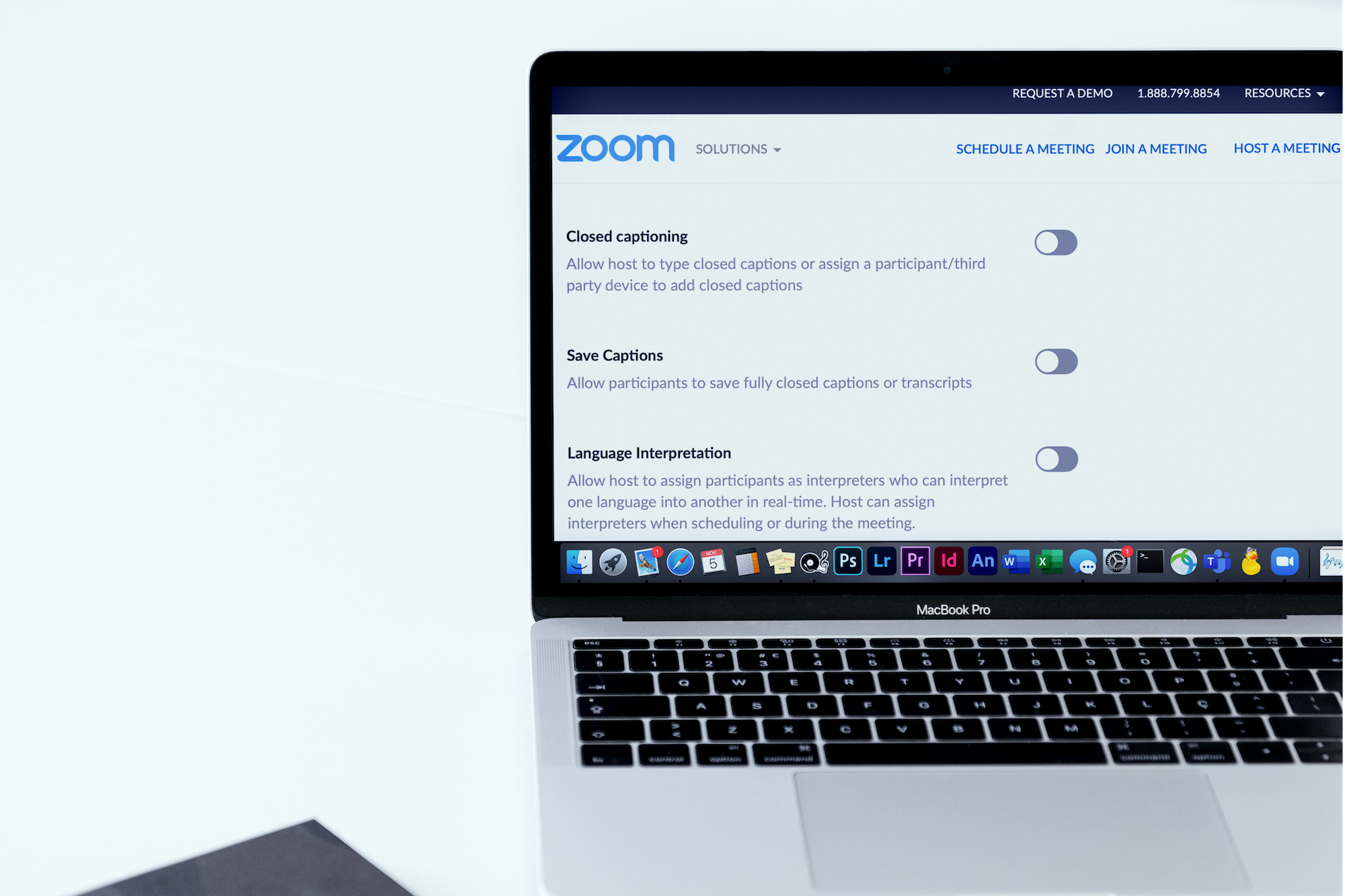
Yale Daily News
Six months after classes first transitioned online, students and faculty members can now opt to use live closed captioning in their Zoom sessions.
Since March, student disabilities advocates have voiced concerns about the unavailability of automatic closed captioning, which may obstruct students who are deaf or hard of hearing from fully participating in classes.
According to Elizabeth Conklin, the University’s associate vice president for institutional equity, access and belonging, Yale IT services and the Student Accessibility Services teams have been working for months to implement a live closed captioning solution for all of Yale. But Conklin said that after Zoom itself soft-launched a new live transcription feature just like the one offered by those audio transcription services, Yale ITS decided to work with campus administrators to determine how to best deploy and share the new feature, which users can turn on in their account settings pages.
“The use of closed captioning is a larger part of getting faculty members and students to understand that disability shouldn’t be treated as a case-by-case special exception but as a part of a person’s life,” said Mafalda von Alvensleben ’22, president of Disability Empowerment for Yale, a group of undergraduate disabilities advocates. “Out of respect for that person’s life and their ability to access information, you should turn on closed captions.”
According to Yale ITS Digital Accessibility Specialist Michelle Morgan, Zoom Video Communications did not notify the University of the change, so users discovered the feature on their own in late October. But she believed that the feature became available earlier that month.
Automatic closed captioning is available for all non-HIPAA Yale Zoom accounts, according to Morgan.
Most users affiliated with the medical school are bound under the Health Insurance Portability and Accountability Act, which creates functional constraints on Zoom, related to privacy and security standards.
Faculty, staff and students can enable the “live transcription service” function by navigating to the settings page of their Yale Zoom accounts.
Automatic captioning is not turned on by default during Zoom sessions, so meeting hosts have to click on the button in their toolbar to allow participants to view the dialogue as subtitles, a running transcript or both.
“It’s up to the user to decide if they want subtitles/transcripts or not, which is an accessibility best practice,” Morgan wrote in an email to the News.
Additionally, von Alvensleben pointed out that faculty members may not effectively implement it in their classes if enforcement and awareness of the new tool are limited.
Hearing-impaired students who registered their accommodations needs with SAS can usually be accompanied to lectures by a stenographer when classes meet in person. For online classes — before Zoom introduced the live transcription feature — faculty members could request remote transcribers to feed live text to students with registered accommodations.
But von Alvensleben criticized the University for not implementing a schoolwide captioning tool sooner. The previous service was treated like a “special case” exception, she said, placing an additional burden on students with disabilities to seek out University accommodations for their needs.
In response, Michael Vaughn, Yale ITS associate director of digital accessibility, said that Yale began exploring auto-captioning options for Zoom as soon as it became clear there would be a larger demand for Zoom use due to the pandemic. “While we were exploring options in the market, Zoom came up with their own feature,” he added.
According to SAS Director Sarah Scott Chang, the Yale office has been seeing fewer requests this semester related to physical accommodations and more related to online classes, including issues with excessive screen time, poorly recorded audio and screen readers.
According to Morgan, captions can be a critical service not only for deaf or partially deaf students but also for students with cochlear implants, attention deficit disorders or auditory processing disorders. Combining written and spoken messaging can streamline communication and increase retention for non-native English speakers, too, Conklin said.
Morgan added that for users who may be contending with background noise, low bandwidth or spotty Internet connections, live captioning can be an indispensable tool for remote work and studying.
“I am hopeful that an unintended ramification of this shift to remote learning will be greater accessibility in the future, for students with and without a disability,” Chang said. “Many aspects of university life are being re-examined and adjusted, and these adjustments often provide greater accessibility for all students.”
Joaquín Lara-Midliff ’23, the Yale College Council’s accessibility and disability policy chair, added that the pandemic has “shined a light on inequities across the board” and “gives the University a moment to reflect honestly on disability.”
“Tech can help increase inclusivity,” said von Alvensleben. “All change is hard, but at least this change leads to people feeling more included.”
According to its website, DEFY was founded in 2016.
Emily Tian | emily.tian@yale.edu







